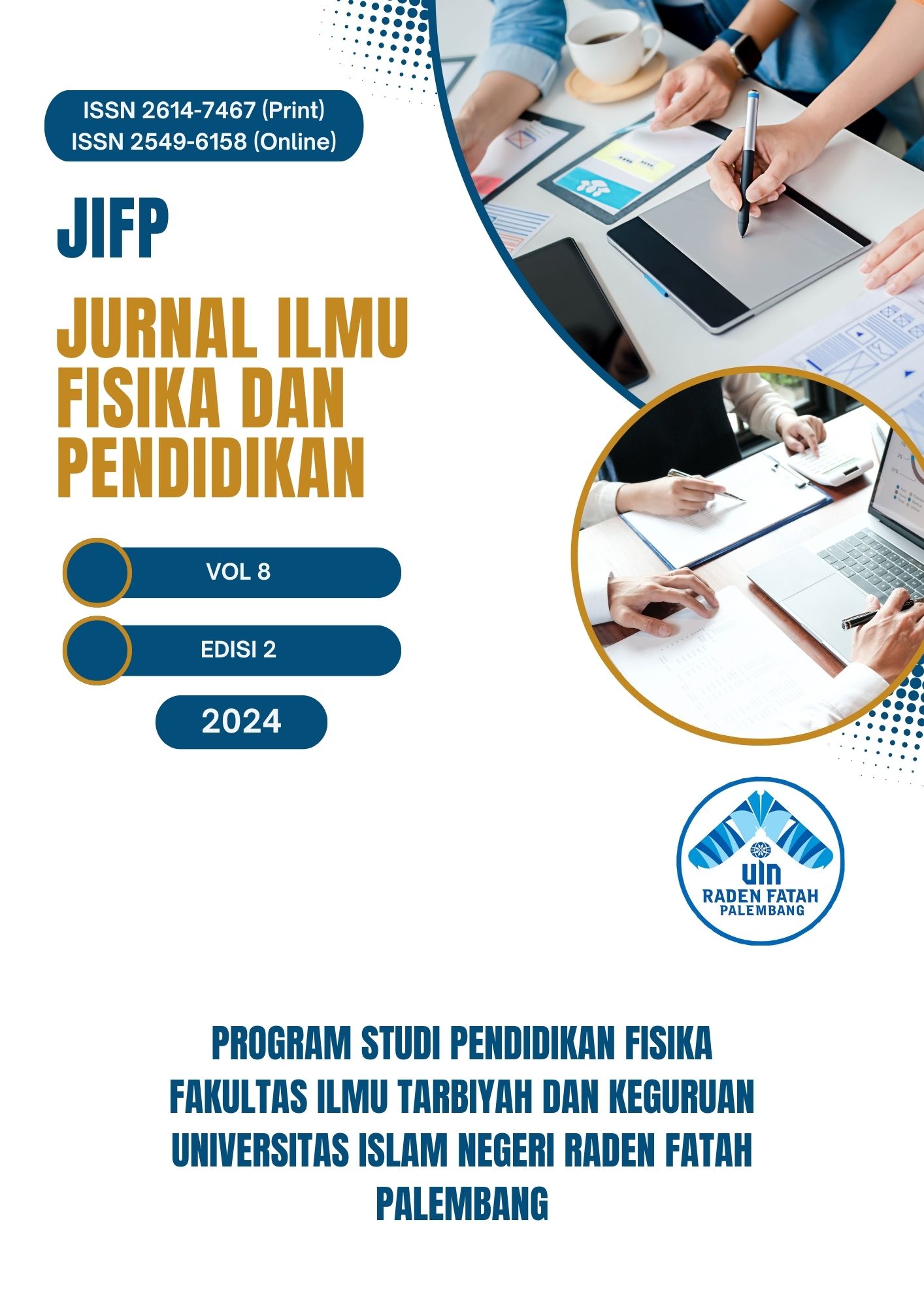Development of E-LKPD Based on Somatic Auditory Visualization Intellectually Using Live Worksheets on Caloric Material
Main Article Content
Abstract
In learning physics, students are less enthusiastic and less active when studying physics. This is because the teaching materials used by students are not in accordance with the students' learning styles and the LKPD used by educators during the learning process does not attract students' interest in learning because it only displays pictures and questions. The aim of this research is to Develop an E-LKPD based on Somatic Auditory Visualization Intellectualy using live worksheets on heat material in class XI SMA that is valid and practical. This type of research is 4D model development research which has four stages, namely: Define, Design, Development and Disseminate. The subjects in this research were 33 educators and students in class XI of the UNP Laboratory Development High School, Padang City. The instruments used in this research were a validity questionnaire and a practicality questionnaire. Then the data that has been obtained is analyzed to see the validity and practicality of the teaching materials. Based on the results of data analysis, it was found that the E-LKPD based on Somatic Auditory Visualization Intellectualy using live worksheets developed was categorized as very valid with an overall average of 86.5%. Apart from that, teaching materials are categorized as very partial with an overall average of 94.16%
Downloads
Article Details
How to Cite
References
Asfar, & Zainuddin. (2015). Secondary Students’ Perceptions of Information, Communication and Technology (ICT) Use in Promoting Self- Directed Learning in Malaysia. The Online Journal of Distance Education and E-Learning, 3(4), 67–82.
Budiyono Saputro. (2017). Manajemen Penelitian Pengembangan.
Eka Erlinawati, C., & Bektiarso, S. & M. (2019). Model Pembelajaran Project Based Learning Berbasis Stem Pada Pembelajaran Fisika. Prosiding Seminar Nasional Pendidikan Fisika, 4(1), 2527–5917.
Erpan, A., Nanda, F. F., Augustini, M. C., & Desnita. (2021). Meta Analisis Pengaruh Model Pembelajaran Kooperatif Pada Mata Pelajaran Fisika Terhadap Hasil Belajar Siswa. Jurnal Kumparan Fisika, 4(2), 120–128. https://doi.org/10.33369/jkf.4.2.120-128
Fauzi, A., Rahmatih, A. N., Indraswati, D., & Sobri, M. (2021). Penggunaan Situs Liveworksheets Untuk Mengembangkan LKPD Interaktif Di Sekolah Dasar. Jurnal Pengambidian Masyarakat, 2(3), 232–240.
Hidayati, L. N. (2022). Pengembangan E-LKPD Perubahan Lingkungan Berbasis Science Literacy Untuk Melatihkan Keterampilan Berpikir Kritis Peserta Didik Kelas X SMA. Ejournal Unesa, 11(2), 393.
Indriani, S., Nuryadi, Marhaeni, N. H., & Kurniati, R. (2022). Efektivitas Penggunaan E-LKPD Untuk Meningkatkan Kemampuan Pemahaman Konsep Segiempat dan Segitiga. Jurnal Pendidikan Tambusai, 6(1), 3959–3966.
Kanasi, & Saruan. (2020). Mobile Learning (M-Learning) Based Learning Application Design for Elementary School Students. Jurnal Ilmiah Sains, 20(2), 70–77.
Purnama, A., & Suparman. (2020). Studi Pendahuluan: E-LKPD Berbasis PBL untuk Meningkatkan Kemampuan Literasi Matematis Peserta Didik. JKPM (Jurnal Kajian Pendidikan Matematika), 6(1), 131–140. https://doi.org/10.30998/jkpm.v6i1.8169
Puspita, V., & Dewi, I. P. (2021). Efektifitas E-LKPD berbasis Pendekatan Investigasi terhadap Kemampuan Berfikir Kritis Siswa Sekolah Dasar. Jurnal Cendekia : Jurnal Pendidikan Matematika, 5(1), 86–96. https://doi.org/10.31004/cendekia.v5i1.456
Saleh, S. (2022). Implementasi Model Savi Dalam Meningkatkan Hasil Belajar Siswa Pada Mata Pelajaran IPS Tentang Kenampakan Alam dan Keragaman Sosial Budaya. Jurnal Ilmiah Wahana Pendidikan, 8(21), 242–247.
Supu, A., Bore, N. K. K. T. &, & Fakhruddin. (2023). Analisis Sumber Daya Dan Manajemen Laboratorium Fisika Pada Sma Negeri Di Kota Kupang. Jurnal Penelitian Dan Pengetahuan, 1, 76–84.
Sya’idah, & Dkk. (2020). Pengaruh Model Blended Learning Berbantuan E-LKPD Materi Hidrolisis Garam terhadap Hasil Belajar Peserta Didik. Chemistry in Education, 9(1), 1–8.
Thiagarajan. (1974). Four-D Model Model Pengembangan perangkat.

